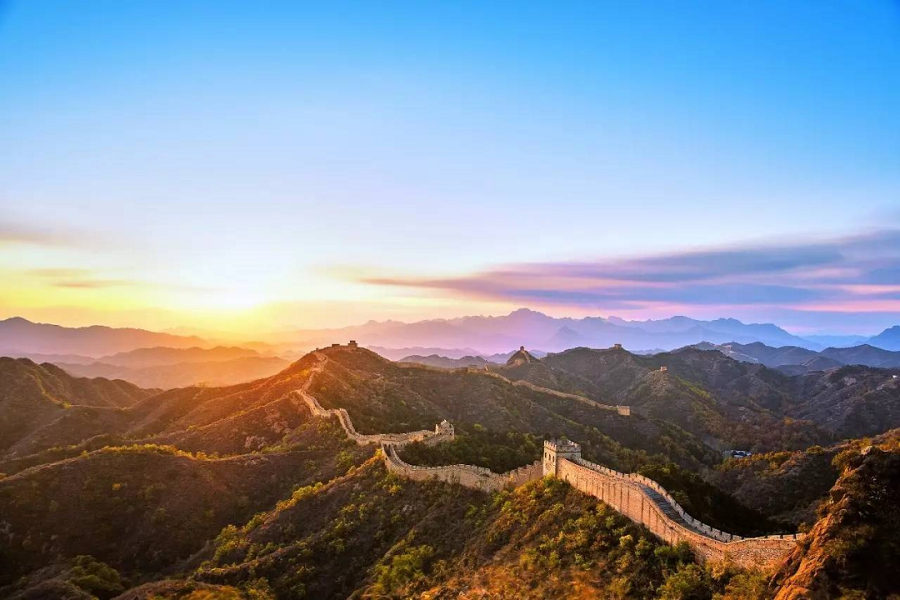
Qi Ji
Professor, School of Cultural Industry Management, Communication University of China
In Ganzhou, Jiangxi Province, "walking along the Long March trail and eating a bowl of red rice and pumpkin soup" has become a popular tourist project; In Dongying, Shandong Province, the Yellow River cultural heritage is being systematically protected, and theme tourism activities are welcomed by tourists; In Yangzhou, Jiangsu Province, the list of intangible cultural heritage, canal food and other topics was released, allowing the public to experience the historical journey of "a thousand years of poetic crossing, the scenic spot still exists"... For some time, the construction of the Great Wall, the Grand Canal, the Long March, the Yellow River, and the Yangtze River National Cultural Parks has been steadily advancing, and the related scenic spots have become online celebrity travel and card punching places, showing the magnificent atmosphere of cultural construction in the new era.
Culture rejuvenates the country, and culture strengthens the nation. From exploring the establishment of the national park system to launching the national cultural park construction plan, since the 18th National Congress of the Communist Party of China, the construction of China's national cultural parks has entered the fast lane, opening a new track for promoting the creative transformation and innovative development of China's excellent traditional culture, creating a new platform for inheriting revolutionary culture and developing advanced socialist culture, and constantly meeting the people's growing cultural needs, building a strong sense of the Chinese national community Telling Chinese stories well is of great significance.
The report of the 20th National Congress of the Communist Party of China clearly stated: "Build and make good use of the national cultural park". The National Cultural Park innovates the way of cultural heritage protection and inheritance, and presents the cultural treasures of Chinese civilization in a panoramic way. The national cultural parks are distributed in strips, continuous layout and winding linkage. A large number of cultural heritages are distributed along the lines, vividly demonstrating the broad and profound Chinese culture and splendid and profound historical civilization. After thousands of years of trials and hardships, the Great Wall is a valuable cultural heritage of the Chinese nation. The Grand Canal stretches for 3200 miles and contains an inclusive and colorful culture. The vigorous Yellow River culture and the flexible Yangtze River culture "help each other", shaping the national character of self-improvement. The historical and cultural relics left by the Red Army along the Long March demonstrate the arduous struggle of the Chinese revolution. To build a national cultural park, it is necessary to rely on these cultural relics and cultural resources, which represent the national image and the unique spirit of the Chinese nation, to create a cultural project that demonstrates the Chinese style and spirit.
The construction of national cultural parks enriches the cultural life and historical perception of the people, helps to build national self-confidence, stimulate cultural identity, and build a common spiritual home. The National Cultural Park shows the beauty of Chinese history, mountains and rivers, culture and belief, and embodies the Chinese nation's spirit of constant self-improvement, patriotism, rock solid faith, the pursuit of virtue and good civilization, and the ecological concept of harmony between man and nature. In the long history, there are countless literary and artistic masterpieces depicting the Great Wall frontier fortress, eulogizing the Yangtze River and Yellow River, and depicting the customs of the canal. In modern life, there is no shortage of excellent literary and artistic works to tell the stories of the Long March and the epic of the Red Army. Both cultural relics and historic sites and cultural works are nutrients to enhance the guiding force of cultural values, the cohesion of cultural identity and the driving force of national spirit.
The construction of national cultural parks is a systematic project, which needs to balance culture and economy, culture and ecology, handle the relationship between tradition and modernity, nationalization and internationalization, and give full play to the role of effective markets and promising governments. Let cultural relics speak, let history speak and let culture speak. Advanced technology is an important support. We should strengthen the digital representation of historical culture and the empowerment of science and technology, restore the historical situation with culture and technology, and reproduce the historical time and space through digital scenes. The vitality of culture lies in being close to life and serving the people. We should pay more attention to the creative expression, innovation and transformation of traditional culture, strengthen research, exploration, integration and innovation, promote the integration of culture, culture, museum, tourism, culture and innovation, and healthy integration with physical education, optimize cultural tourism routes, create cultural heritage corridors, build beautiful villages, and make life better.
"The mountains are high and the rivers are long". Cultural construction can not be separated from the strategic determination to work tirelessly and for a long time. To polish the name card of the National Cultural Park and tell a good story of Chinese culture will certainly bring more sense of gain to the people, bring more cohesion to the society and show the world a credible, lovely and respectable image of China.
